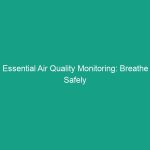Introduction
In today’s fast-paced work environments, ensuring the Safety and well-being of employees has become a paramount concern for organizations across the globe. The concept of Health and Safety Legal Requirements encompasses a wide range of Regulations and practices aimed at minimizing risks and protecting workers. Understanding these requirements is not merely a legal obligation; it is essential for fostering a culture of safety, enhancing productivity, and maintaining a positive workplace Environment. This article delves into the intricacies of health and safety legal requirements, exploring the regulatory frameworks, best practices, case studies, challenges faced by organizations, and future trends in the domain of health, safety, and environment (HSE).
1. Understanding Health and Safety Legal Requirements
Health and Safety Legal Requirements refer to the laws and regulations put in place to safeguard the health and safety of employees in the workplace. These requirements vary by country and industry, but their core purpose remains the same: to prevent accidents, injuries, and health issues associated with work. Legal frameworks are designed to provide clear guidelines on how to manage Workplace Safety, and they often evolve based on emerging risks and technological advancements.
1.1 The Importance of Compliance
Compliance with health and safety legal requirements is crucial for several reasons. Firstly, failure to comply can result in severe legal repercussions, including fines, lawsuits, or even imprisonment for responsible parties. Additionally, non-compliance can significantly damage an organization’s reputation, leading to loss of clients and business opportunities. Furthermore, ensuring compliance fosters a safer working environment, which can enhance employee morale and productivity. Ultimately, prioritizing health and safety is not just about adhering to the law; it is about valuing human life and well-being in the workplace.
1.2 Key Components of Health and Safety Legal Requirements
Health and safety legal requirements typically encompass several key components, including:
- Risk Assessment: Employers are required to conduct thorough risk assessments to identify potential Hazards and implement appropriate Control Measures.
- Training and Education: Organizations must provide adequate Training to employees on health and safety practices relevant to their roles.
- Reporting and Documentation: Proper documentation of incidents, training sessions, and safety protocols is necessary for compliance and accountability.
- Emergency Preparedness: Employers must have plans in place for emergencies, including Evacuation Procedures and first aid measures.
2. Regulatory Frameworks Governing Health and Safety
Regulatory frameworks vary by region, but they generally include a combination of local, national, and international laws. Understanding these frameworks is essential for organizations to ensure full compliance with health and safety legal requirements.
2.1 International Standards
International standards such as the ISO 45001 provide a global framework for Occupational Health and safety management systems. This standard emphasizes the importance of proactive measures and continuous improvement in health and safety practices. Organizations that adopt ISO 45001 can demonstrate their commitment to providing a safe work environment, which can enhance their reputation and competitiveness.
2.2 National Legislation
In many countries, national legislation governs Workplace Health and safety. For example, the Occupational Safety and Health Administration (OSHA) in the United States sets forth regulations that employers must follow to protect their employees. Similarly, in the United Kingdom, the Health and Safety at Work Act establishes a comprehensive framework for managing health and safety risks. Organizations must familiarize themselves with the relevant laws in their jurisdiction to avoid penalties and ensure compliance.
2.3 Local Regulations
Local regulations can also play a significant role in health and safety compliance. Municipalities may impose specific requirements tailored to local industries and risks. It is essential for organizations to stay informed about local regulations and integrate them into their health and safety management practices.
3. Best Practices for Ensuring Compliance
Implementing Best Practices in health and safety management is crucial for ensuring compliance with legal requirements. Organizations can adopt several strategies to enhance their health and safety programs and reduce risks effectively.
3.1 Conducting Regular Risk Assessments
Regular risk assessments are fundamental to identifying potential Hazards in the workplace. Employers should conduct assessments periodically and whenever there are changes in the workplace, such as new equipment or processes. By identifying risks early, organizations can take proactive measures to mitigate them and ensure compliance with health and safety legal requirements.
3.2 Providing Comprehensive Training
Training is a critical component of health and safety compliance. Organizations should develop training programs that cover various aspects of Workplace Safety, including the use of Personal Protective Equipment (PPE), emergency Procedures, and specific hazards related to the work environment. Regular refresher courses can help reinforce safety knowledge and keep employees informed about Best Practices.
3.3 Encouraging Employee Participation
Involving employees in health and safety initiatives can significantly enhance compliance efforts. Organizations should encourage open communication about safety concerns and suggestions for improvement. Establishing safety committees or holding regular safety meetings can foster a culture of safety and empower employees to take an active role in their well-being.
3.4 Implementing Safety Technology
Advancements in technology have introduced various tools that can enhance Workplace Safety. From wearable safety devices to software for tracking incidents and compliance, organizations can leverage technology to streamline their health and safety programs. Such tools not only aid in compliance but also provide valuable data for continuous improvement.
4. Case Studies: Lessons Learned from Compliance Failures
Real-world case studies provide valuable insights into the consequences of failing to adhere to health and safety legal requirements. Analyzing these cases can help organizations understand the importance of compliance and the potential risks of neglecting health and safety obligations.
4.1 The Rana Plaza Collapse
The Rana Plaza collapse in Bangladesh in 2013 serves as a tragic reminder of the consequences of ignoring health and safety legal requirements. Over 1,100 workers lost their lives due to poor building conditions and lack of safety regulations. This incident prompted global scrutiny of labor practices and led to significant changes in safety regulations within the garment industry. Organizations worldwide learned the importance of stringent compliance and the ethical obligations of ensuring worker safety.
4.2 The BP Deepwater Horizon Oil Spill
The BP Deepwater Horizon oil spill in 2010 is another example of the catastrophic Effects of non-compliance with health and safety regulations. The disaster resulted in the deaths of 11 workers and caused extensive environmental damage. Investigations revealed that BP had disregarded safety protocols and failed to implement necessary risk assessments. This incident underscored the critical need for adherence to health and safety legal requirements and the potential repercussions of negligence.
5. Challenges in Achieving Compliance
While organizations strive to comply with health and safety legal requirements, they often encounter various challenges that can hinder their efforts. Understanding these challenges is essential for developing effective strategies to overcome them.
5.1 Resource Constraints
Many organizations, especially small and medium-sized enterprises (SMEs), face resource constraints that limit their ability to implement comprehensive health and safety programs. Budget limitations can hinder training efforts, safety equipment purchases, and the hiring of qualified safety personnel. To address these challenges, organizations can explore partnerships with local safety organizations, seek grants, or invest in cost-effective safety solutions.
5.2 Keeping Up with Regulatory Changes
Health and safety regulations are constantly evolving, making it challenging for organizations to stay compliant. Changes in laws, industry standards, and best practices require continuous monitoring and adaptation. Organizations can mitigate this challenge by establishing a compliance team responsible for keeping up with regulatory changes and ensuring that policies and procedures are updated accordingly.
5.3 Cultural Barriers
Organizational culture plays a significant role in health and safety compliance. In workplaces where safety is not prioritized, employees may be reluctant to report hazards or participate in safety initiatives. To overcome cultural barriers, organizations should promote a safety-first mindset by recognizing and rewarding safe behaviors, providing open channels for communication, and involving employees in safety decision-making processes.
6. Future Trends in Health and Safety Legal Requirements
The landscape of health and safety legal requirements is continuously evolving, influenced by advancements in technology, changing workforce demographics, and emerging risks. Organizations must stay ahead of these trends to ensure compliance and safeguard their employees effectively.
6.1 The Rise of Remote Work
The COVID-19 pandemic has accelerated the trend of remote work, presenting new challenges and considerations for health and safety compliance. Organizations must adapt their health and safety policies to address the unique risks associated with remote work, such as ergonomic issues and mental health concerns. Employers should provide guidance on creating safe home office environments and offer resources for employee well-being.
6.2 Increased Focus on Mental Health
There is a growing recognition of the importance of mental health in the workplace. Health and safety legal requirements are evolving to include provisions for mental health support and well-being initiatives. Organizations should prioritize mental health by implementing programs that promote work-life balance, stress management, and access to mental health resources.
6.3 Integration of Artificial Intelligence (AI)
Artificial intelligence is increasingly being integrated into health and safety management systems. AI can analyze data to identify potential hazards, monitor compliance, and predict incidents before they occur. Organizations that leverage AI can enhance their safety programs, streamline reporting processes, and ultimately improve compliance with health and safety legal requirements.
Conclusion
In conclusion, understanding and adhering to health and safety legal requirements is essential for organizations committed to protecting their employees and fostering a safe work environment. By familiarizing themselves with regulatory frameworks, implementing best practices, learning from case studies, and addressing challenges, organizations can enhance their compliance efforts significantly. As the landscape of health and safety continues to evolve, organizations must remain proactive in adapting to new trends and ensuring the well-being of their workforce. Prioritizing health and safety is not just a legal obligation; it is a moral imperative that contributes to the overall success and Sustainability of any organization. Take action today—evaluate your health and safety practices, ensure compliance, and invest in your employees’ well-being for a brighter, safer future.


